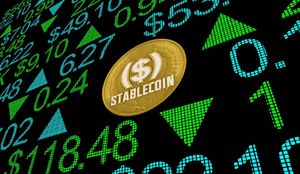
The relentless march of technological progress, particularly in artificial intelligence, is inextricably linked to the production of semiconductors – the foundational building blocks of our digital world. However, the environmental footprint of chip manufacturing has long been a significant concern, marked by intensive energy and water consumption, reliance on hazardous chemicals, and substantial waste generation. In a pivotal shift, the semiconductor industry is now undergoing a profound transformation, embracing a green revolution driven by innovative initiatives and technological advancements aimed at drastically reducing its ecological impact and resource consumption. This movement is not merely a corporate social responsibility endeavor but a strategic imperative, shaping the future of a critical global industry.
From the adoption of green chemistry principles to groundbreaking advancements in energy efficiency and comprehensive waste reduction strategies, chipmakers are reimagining every stage of the manufacturing process. This paradigm shift is fueled by a confluence of factors: stringent regulatory pressures, increasing investor and consumer demand for sustainable products, and a growing recognition within the industry that environmental stewardship is key to long-term viability. The innovations emerging from this push promise not only a cleaner manufacturing process but also more resilient and resource-efficient supply chains, laying the groundwork for a truly sustainable digital future.
Engineering a Greener Chip: Technical Leaps in Sustainable Fabrication
The core of sustainable semiconductor manufacturing lies in a multi-pronged technical approach, integrating green chemistry, radical energy efficiency improvements, and advanced waste reduction methodologies. Each area represents a significant departure from traditional, resource-intensive practices.
In green chemistry, the focus is on mitigating the industry's reliance on hazardous substances. This involves the active substitution of traditional, harmful chemicals like perfluorinated compounds (PFCs) with more benign alternatives, significantly reducing toxic emissions and waste. Process optimization plays a crucial role, utilizing precision dosing and advanced monitoring systems to minimize chemical usage and byproduct generation. A notable advancement is the development of chemical recycling and reuse technologies; for instance, LCY Group employs a "Dual Cycle Circular Model" to recover, purify, and re-supply electronic-grade isopropyl alcohol (E-IPA) to fabs, enabling its repeated use in advanced chip production. Furthermore, research into gas-phase cleaning technologies aims to prevent the creation of hazardous byproducts entirely, moving beyond post-production cleanup.
Energy efficiency is paramount, given that fabs are colossal energy consumers. New "green fab" designs are at the forefront, incorporating advanced HVAC systems, optimized cleanroom environments, and energy-efficient equipment. The integration of renewable energy sources is accelerating, with companies like Taiwan Semiconductor Manufacturing Company (TSMC) (TWSE: 2330) and Samsung Electronics (KRX: 005930) making substantial investments in solar and wind power, including TSMC's world's largest corporate renewable energy power purchase agreement for an offshore wind farm. Beyond infrastructure, innovations in advanced materials like silicon carbide (SiC) and gallium nitride (GaN) enable more energy-efficient power devices, reducing energy losses both in the chips themselves and in manufacturing equipment. Optimized manufacturing processes, such as smaller process nodes (e.g., 5nm, 3nm), contribute to more energy-efficient chips by reducing leakage currents. AI and machine learning are also being deployed to precisely control processes, optimizing resource usage and predicting maintenance, thereby reducing overall energy consumption.
Waste reduction strategies are equally transformative, targeting chemical waste, wastewater, and electronic waste. Closed-loop water systems are becoming standard, recycling and purifying process water to significantly reduce consumption and prevent contaminated discharge; GlobalFoundries (NASDAQ: GFS), for example, has achieved a 98% recycling rate for process water. Chemical recycling, as mentioned, minimizes the need for new raw materials and lowers disposal costs. For electronic waste (e-waste), advanced recovery techniques are being developed to reclaim valuable materials like silicon from discarded wafers. Efforts also extend to extending device lifespans through repair and refurbishment, fostering a circular economy, and upcycling damaged components for less demanding applications. These advancements collectively represent a concerted effort to decouple semiconductor growth from environmental degradation.
Reshaping the Silicon Landscape: Industry Impact and Competitive Dynamics
The shift towards sustainable semiconductor manufacturing is profoundly reshaping the competitive landscape for tech giants, AI companies, and innovative startups alike. This transformation is driven by a complex interplay of environmental responsibility, regulatory pressures, and the pursuit of operational efficiencies, creating both significant opportunities and potential disruptions across the value chain.
Leading semiconductor manufacturers, including Intel (NASDAQ: INTC), TSMC (TWSE: 2330), and Samsung Electronics (KRX: 005930), are at the vanguard of this movement. These titans are making substantial investments in green technologies, setting aggressive targets for renewable energy adoption and water recycling. For them, sustainable practices translate into reduced operational costs in the long run, enhanced brand reputation, and crucial compliance with tightening global environmental regulations. Moreover, meeting the net-zero commitments of their major customers – tech giants like Apple (NASDAQ: AAPL), Google (NASDAQ: GOOGL), and Microsoft (NASDAQ: MSFT) – becomes a strategic imperative, cementing their market positioning and supply chain resilience. Companies that can demonstrate a strong commitment to ESG principles will increasingly differentiate themselves, attracting environmentally conscious customers and investors.
For AI companies, the implications are particularly significant. The insatiable demand for powerful AI accelerators, GPUs, and specialized AI chips, which are critical for training and deploying large language models, directly intensifies the need for sustainable hardware. Advancements in energy-efficient AI chips (e.g., ASICs, neuromorphic, photonic chips) promise not only lower operational expenditures for energy-intensive data centers but also a reduced carbon footprint, directly contributing to an AI company's Scope 3 emissions reduction goals. Furthermore, AI itself is emerging as a powerful tool within semiconductor manufacturing, optimizing processes, reducing waste, and improving energy efficiency, creating a symbiotic relationship between AI and sustainability.
While the capital-intensive nature of chip manufacturing typically poses high barriers to entry, sustainable semiconductor manufacturing presents unique opportunities for agile startups. Initiatives like "Startups for Sustainable Semiconductors (S3)" are fostering innovation in niche areas such as green chemistry, advanced water purification, energy-efficient processes, and AI-powered manufacturing optimization. These startups can carve out a valuable market by providing specialized solutions that help larger players meet their sustainability targets, potentially disrupting existing supplier relationships with more eco-friendly alternatives. However, the initial high costs associated with new green technologies and the need for significant supply chain overhauls represent potential disruptions, requiring substantial investment and careful strategic planning from all players in the ecosystem.
Beyond the Fab Walls: Broadening the Impact of Sustainable Silicon
The drive for sustainable semiconductor manufacturing transcends immediate environmental benefits, embodying a wider significance that deeply intertwines with the broader AI landscape, global economic trends, and societal well-being. This movement is not just about cleaner factories; it's about building a more resilient, responsible, and viable technological future.
Within the rapidly evolving AI landscape, sustainable chip production is becoming an indispensable enabler. The burgeoning demand for increasingly powerful processors to fuel large language models, autonomous systems, and advanced analytics strains existing energy and resource infrastructures. Without the ability to produce these complex, high-performance chips with significantly reduced environmental impact, the exponential growth and ambitious goals of the AI revolution would face critical limitations. Conversely, AI itself is playing a transformative role in achieving these sustainability goals within fabs, with machine learning optimizing processes, predicting maintenance, and enhancing precision to drastically reduce waste and energy consumption. This creates a powerful feedback loop where AI drives the need for sustainable hardware, and in turn, helps achieve it.
The environmental impacts of traditional chip manufacturing are stark: immense energy consumption, colossal water usage, and the generation of hazardous chemical waste and greenhouse gas emissions. Sustainable initiatives directly address these challenges by promoting widespread adoption of renewable energy, implementing advanced closed-loop water recycling systems, pioneering green chemistry alternatives, and embracing circular economy principles for material reuse and waste reduction. For instance, the transition to smaller process nodes, while demanding more energy initially, ultimately leads to more energy-efficient chips in operation. These efforts are crucial in mitigating the industry's significant contribution to climate change and local environmental degradation.
Economically, sustainable manufacturing fosters long-term resilience and competitiveness. While initial investments can be substantial, the long-term operational savings from reduced energy, water, and waste disposal costs are compelling. It drives innovation, attracting investment into new materials, processes, and equipment. Geopolitically, the push for diversified and localized sustainable manufacturing capabilities contributes to technological sovereignty and supply chain resilience, reducing global dependencies. Socially, it creates high-skilled jobs, improves community health by minimizing pollution, and enhances brand reputation, fostering greater consumer and investor trust. However, concerns persist regarding the high upfront capital required, the technological hurdles in achieving true net-zero production, and the challenge of tracking sustainability across complex global supply chains, especially for Scope 3 emissions. The "bigger is better" trend in AI, demanding ever more powerful and energy-intensive chips, also presents a challenge, potentially offsetting some manufacturing gains if not carefully managed. Unlike previous AI milestones that were primarily algorithmic breakthroughs, sustainable semiconductor manufacturing is a foundational infrastructural shift, akin to the invention of the transistor, providing the essential physical bedrock for AI's continued, responsible growth.
The Road Ahead: Future Developments in Sustainable Semiconductor Manufacturing
The trajectory of sustainable semiconductor manufacturing is set for accelerated innovation, with a clear roadmap for both near-term optimizations and long-term transformative changes. The industry is poised to embed sustainability not as an afterthought, but as an intrinsic part of its strategic and technological evolution, driven by the imperative to meet escalating demand for advanced chips while drastically reducing environmental impact.
In the near term (1-5 years), expect to see widespread adoption of 100% renewable energy for manufacturing facilities, with major players like TSMC (TWSE: 2330), Intel (NASDAQ: INTC), and GlobalFoundries (NASDAQ: GFS) continuing to invest heavily in large-scale corporate power purchase agreements. Water conservation and recycling will reach unprecedented levels, with advanced filtration and membrane technologies enabling near-closed-loop systems, driven by stricter regulations. Green chemistry will become more prevalent, with active research and implementation of safer chemical alternatives, such as supercritical carbon dioxide (scCO2) for cleaning and water-based formulations for etching, alongside advanced abatement systems for high global warming potential (GWP) gases. Furthermore, the integration of AI and machine learning for process optimization will become standard, allowing for real-time monitoring, dynamic load balancing, and predictive maintenance to reduce energy consumption and improve yields.
Looking further ahead (5-20+ years), the industry will fully embrace circular economy principles, moving beyond recycling to comprehensive resource recovery, extending product lifecycles through refurbishment, and designing chips for easier material reclamation. Novel materials and manufacturing processes that are inherently less resource-intensive will emerge from R&D. A significant long-term development is the widespread adoption of green hydrogen for decarbonizing energy-intensive thermal processes like wafer annealing and chemical vapor deposition, offering a zero-emission pathway for critical steps. The use of digital twins of entire fabs will become sophisticated tools for simulating and optimizing manufacturing processes for sustainability, energy efficiency, and yield before physical construction, dramatically accelerating the adoption of greener designs.
However, significant challenges remain. The high energy consumption of fabs, particularly for advanced nodes, will continue to be a hurdle, requiring massive investments in renewable energy infrastructure. Water scarcity in manufacturing regions demands continuous innovation in recycling and conservation. Managing hazardous chemical use and e-waste across a complex global supply chain, especially for Scope 3 emissions, will require unprecedented collaboration and transparency. The cost of transitioning to green manufacturing can be substantial, though many efficiency investments offer attractive paybacks. Experts predict that while carbon emissions from the sector will continue to rise due to demand from AI and 5G, mitigation efforts will accelerate, with more companies announcing ambitious net-zero targets. AI will be both a driver of demand and a critical tool for achieving sustainability. The integration of green hydrogen and the shift towards smart, data-driven manufacturing are seen as crucial next steps, making sustainability a competitive necessity rather than just a compliance issue.
A Sustainable Silicon Future: Charting the Course for AI's Next Era
The journey towards sustainable semiconductor manufacturing marks a pivotal moment in the history of technology, signaling a fundamental shift from unchecked growth to responsible innovation. The initiatives and technological advancements in green chemistry, energy efficiency, and waste reduction are not merely incremental improvements; they represent a comprehensive reimagining of how the foundational components of our digital world are produced. This transformation is driven by an acute awareness of the industry's significant environmental footprint, coupled with mounting pressures from regulators, investors, and an increasingly eco-conscious global market.
The key takeaways from this green revolution in silicon are multifaceted. First, sustainability is no longer an optional add-on but a strategic imperative, deeply integrated into the R&D, operational planning, and competitive strategies of leading tech companies. Second, the symbiosis between AI and sustainability is profound: AI's demand for powerful chips necessitates greener manufacturing, while AI itself provides critical tools for optimizing processes and reducing environmental impact within the fab. Third, the long-term vision extends to a fully circular economy, where materials are reused, waste is minimized, and renewable energy powers every stage of production.
This development holds immense significance for the future of AI. As AI models grow in complexity and computational demands, the ability to produce the underlying hardware sustainably will dictate the pace and ethical viability of AI's continued advancement. It represents a mature response to the environmental challenges posed by technological progress, moving beyond mere efficiency gains to fundamental systemic change. The comparison to previous AI milestones reveals that while those were often algorithmic breakthroughs, this is an infrastructural revolution, providing the essential, environmentally sound foundation upon which future AI innovations can securely build.
In the coming weeks and months, watch for continued aggressive investments in renewable energy infrastructure by major chipmakers, the announcement of more stringent sustainability targets across the supply chain, and the emergence of innovative startups offering niche green solutions. The convergence of technological prowess and environmental stewardship in semiconductor manufacturing is setting a new standard for responsible innovation, promising a future where cutting-edge AI thrives on a foundation of sustainable silicon.
This content is intended for informational purposes only and represents analysis of current AI developments.
TokenRing AI delivers enterprise-grade solutions for multi-agent AI workflow orchestration, AI-powered development tools, and seamless remote collaboration platforms.
For more information, visit https://www.tokenring.ai/.





